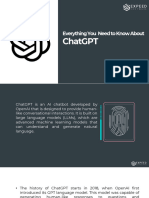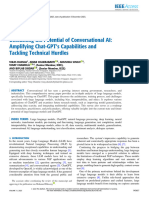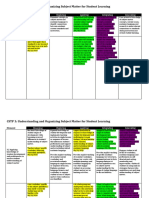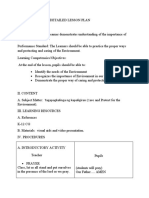0% found this document useful (0 votes)
32 views3 pagesChatGPT Chatbot Guide
This document outlines the essential skills and knowledge required to create a chatbot similar to ChatGPT, including understanding transformer models, machine learning, natural language processing, and data training. It emphasizes the importance of frameworks like Hugging Face Transformers, TensorFlow, and PyTorch, as well as ethical considerations and deployment strategies. The guide also covers user interface integration and the need for real-time interaction capabilities.
Uploaded by
monomoskiCopyright
© © All Rights Reserved
We take content rights seriously. If you suspect this is your content, claim it here.
Available Formats
Download as PDF, TXT or read online on Scribd
0% found this document useful (0 votes)
32 views3 pagesChatGPT Chatbot Guide
This document outlines the essential skills and knowledge required to create a chatbot similar to ChatGPT, including understanding transformer models, machine learning, natural language processing, and data training. It emphasizes the importance of frameworks like Hugging Face Transformers, TensorFlow, and PyTorch, as well as ethical considerations and deployment strategies. The guide also covers user interface integration and the need for real-time interaction capabilities.
Uploaded by
monomoskiCopyright
© © All Rights Reserved
We take content rights seriously. If you suspect this is your content, claim it here.
Available Formats
Download as PDF, TXT or read online on Scribd
/ 3





























































































